In late December 2019, five monastics from Plum Village, along with 40 friends from 22 countries around the world, travelled to northern India to walk in the footsteps of the Buddha and visit sacred Buddhist sites.
Of the journey, Brother Phap Linh said, “It was remarkable – as much a journey inside as a journey outside. We were not tourists. We travelled as a sangha, beginning each day with meditation, then engaging in mindful walking, slowing to become aware of the place and history through which we travelled. Among the most rewarding parts of the journey were the deep insights that we all experienced and the dharma sharing that followed each day.”
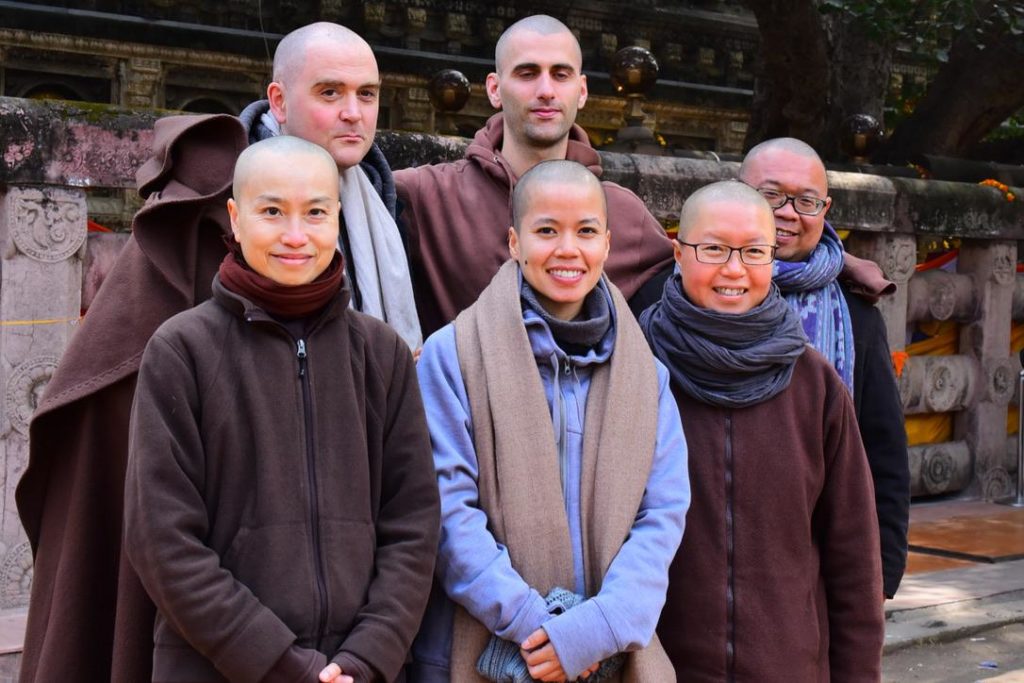
Neeru Chadda, a psychologist, counsellor, founder/director of the Health and Peace Centre in Sydney, Australia, was also very moved by the community and relationships that evolved during the tour: “Meeting …… many other explorers of the spirit who formed our ‘satsang,’ our spiritual community, was one of the key highlights of the journey for me.”
The pilgrims from Plum Village walked not only on the path travelled by the Buddha 2,500 years ago, but also in Thich Nhat Hanh’s footsteps, because Thay (“teacher” as he is affectionately known), the founder of Plum Village, also walked through this part of India in 1988, 1997, and 2008. For him, the experience was extremely moving, and after his pilgrimage in 1988, he encouraged his Indian student and guide, Shantum Seth, to continue organizing and leading such pilgrimages annually. The tour in 2019 was one of those trips. Shantum, feels that anyone interested in the Buddha’s teachings should visit the sites associated with the historical Buddha. Shantum said, “This is a practice the Buddha himself suggested in the Mahaparinirvana Sutra. It allows us to meet the Buddha as a human being, to sit and walk where he did, be it in caves or groves, to bring alive the places mentioned in the sutras, to meet the descendants of people he met, and to experience the opportunity to awaken the Buddha nature within us.”
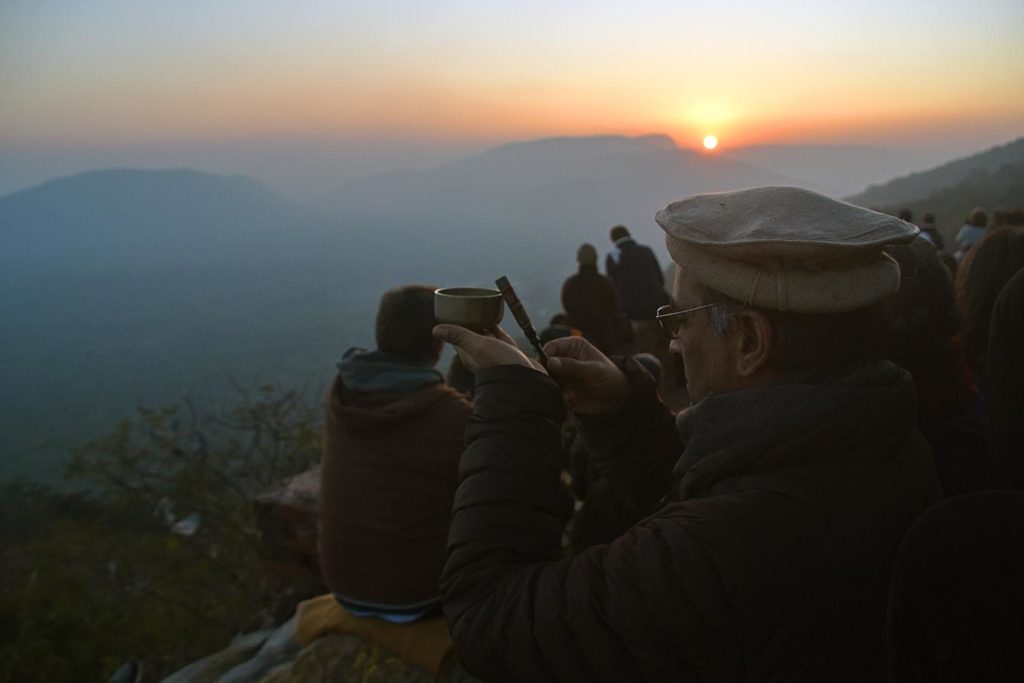
Shantum Seth, Dharma teacher, tour leader and guide invites the bell on Vulture Peak
[Photo Credit: Vikash Kumar]
Walking in the path of the Buddha. Brother Phap Linh is shouldering a bundle of Kusha grass. The Buddha is said to have used this grass to fashion the meditation cushion upon which he sat when he attained enlightenment. [Photo Credit: Vikash Kumar ] 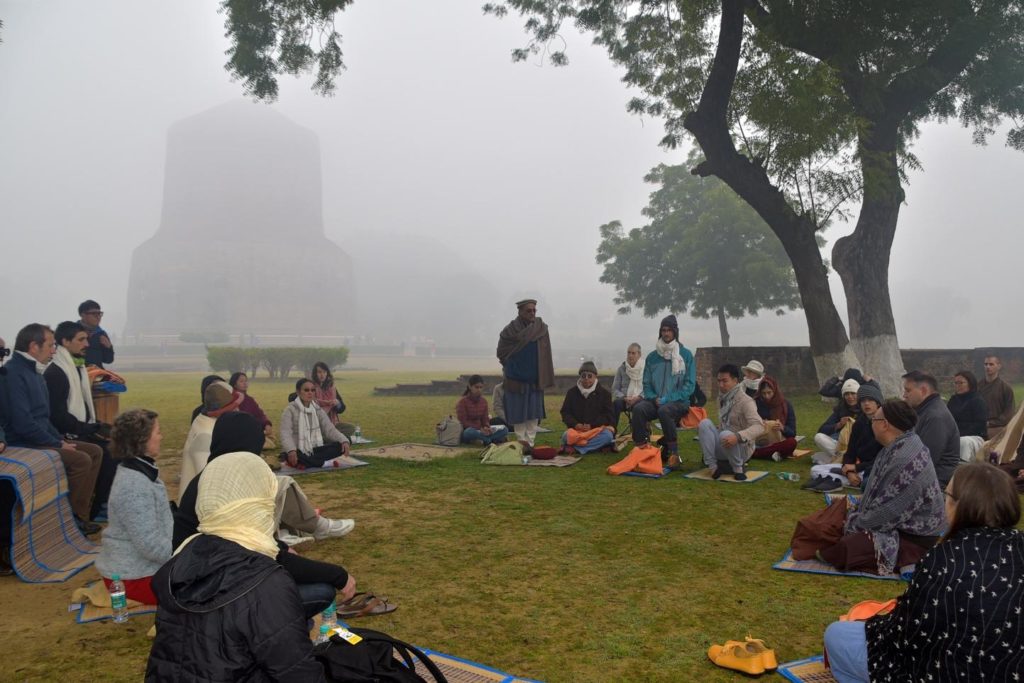
Dhamekh Stupa, Sarnath – said to mark the site where the Buddha, after attaining enlightenment, gave his first teachings to his first five disciples [Photo Credit: Carlos Janvier] 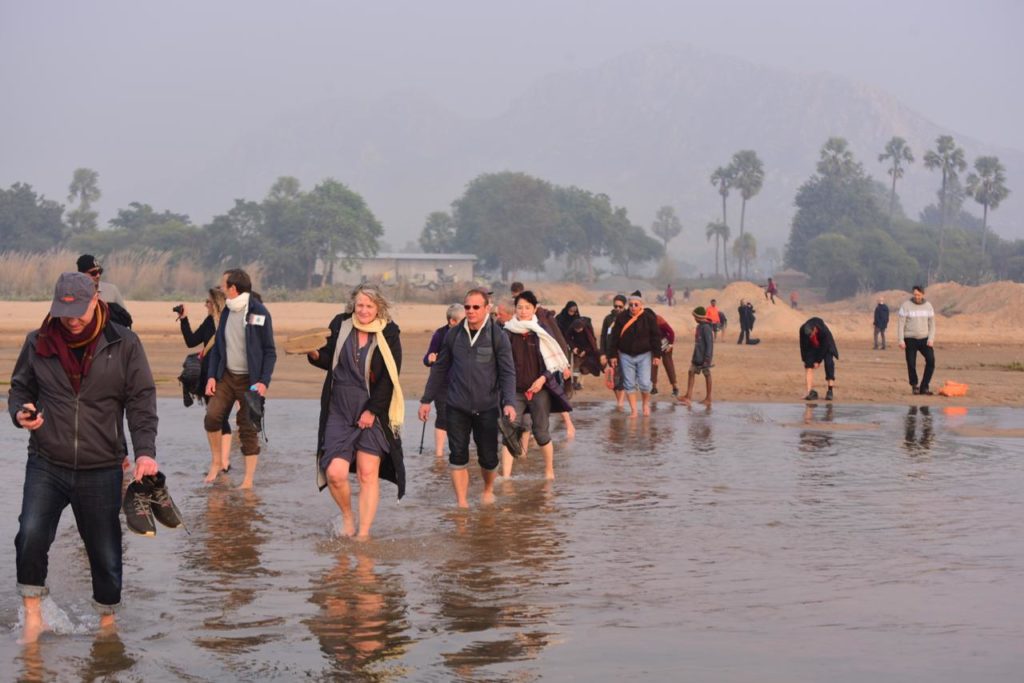
Travellers from Plum Village crossing the Neeranjana River [Photo Credit: Vikash Kumar]
The journey was not just an opportunity to visit the places where the Buddha walked, but, as Phap Linh said, it was a place and time to truly feel what he felt, see what he saw, experience what he experienced. “You really could feel that the Buddha was a living human being. For me, he was transformed from a legendary, historical character to a very real person with whom I felt connection. I came to understand that during his period of asceticism and mortification, the only thing that could have sustained him was compassion – compassion for the suffering of others. It was magical.”
You really could feel that the Buddha was a living human being. For me, he was transformed from a legendary, historical character to a very real person with whom I felt connection.
Brother Phap Linh
Neeru felt similarly: “Visiting the ancient sites linked to Buddha’s ascetic practices, his reaching of enlightenment and his sharing of knowledge with others, were all profoundly moving experiences. Being there brought home the essence of a life well lived, one where there was the possibility of realizing truths about oneself that could help liberate one from the clutches of fear and self-absorption, which seems to be the trap most of us are caught in.”
The pilgrimage began in Sarnath, the village near Varanasi where Gautama Buddha delivered his first teachings after attaining enlightenment and where the Buddhist sangha first came into being. “Even after 2500 years,” Brother Phap Linh said, “the place feels very alive – a place where one can be re-created.”
Before attaining enlightenment, the prince Siddhartha undertook various spiritual practices for six years, including asceticism in a cave not far from the Neeranjana River. After realizing that strict self-denial would not lead to awakening , he accepted a bowl of milk and rice from the daughter of the headman of the village, Sujata, bathed in the Neeranjana, and travelled on to seek enlightenment.
After visiting Sarnath, the group continued on to Bodh Gaya, where the Buddha is said to have attained enlightenment after meditating beneath a peepal tree (Ficus religiosa) – or the Bodhi tree – for seven weeks. Here, the people from Plum Village joined pilgrims from many different Buddhist sects from countries around the world. To their great joy, they found all these groups to not just be tolerant, but acting with loving acceptance and understanding of one another. Georgette who was traveling with her husband of 35-years, Job, said, “I was deeply touched by the devotion of the pilgrims and happy to see all the cultures where Buddhism has taken hold. We were surrounded by the prayers, chanting, and spiritual practice of people from Bali to Tibet.”
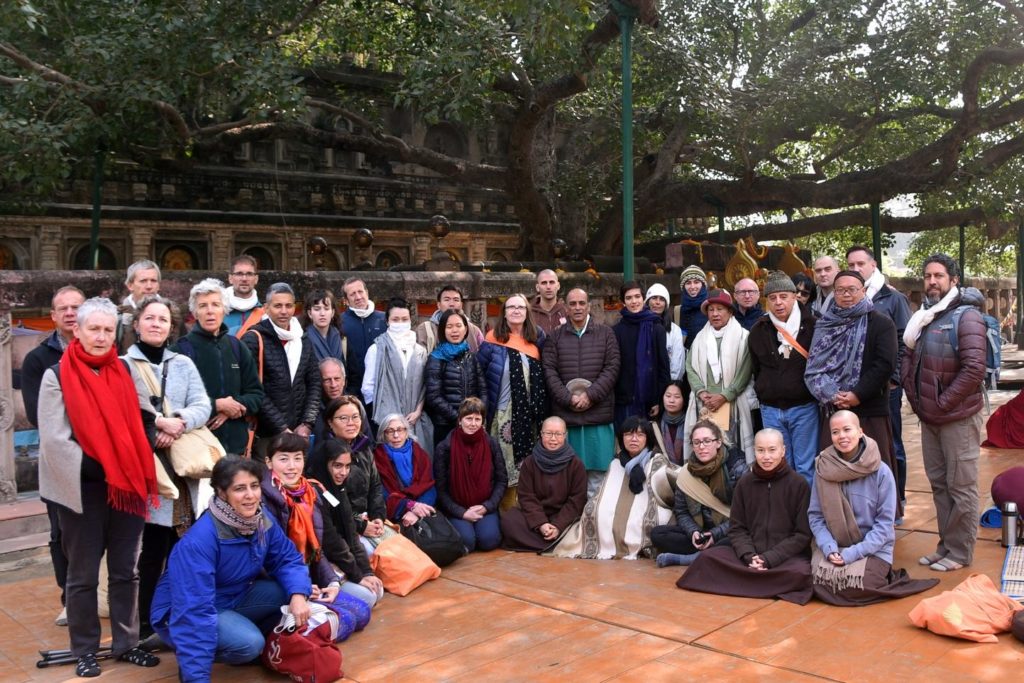
The next stop in the journey was Rajgir and Vulture Peak, often cited as the location of many of the Buddha’s teachings to his disciples, including the Heart Sutra and Lotus Sutra.
The rocky outcrop was supposedly the Buddha’s favourite retreat and one of Thich Nhat Hanh’s as well. Thay conducted his first ordination there in 1988, and, in that tradition, the monastics of Plum Village transmitted the Five Mindfulness Trainings to the tour group at Vulture Peak.
Georgette was again struck by the remarkable diversity of the many people and Buddhist traditions visiting the peak and the deep faith and devotion of all. “I felt as though I was one of the eagles soaring above and watching the world below” she said, “I was with the clouds. I felt I could touch the Buddha; it felt like he was there, beside me, like a grandfather.”

The travellers from Plum Village emphasized the daily, ever-unfolding and always surprising nature of the journey. For example, while the group was in Bodh Gaya, they learned that the Dalai Lama was also there. Although it initially seemed that the group would not be able to meet with the eminent Buddhist leader, because of Shantum’s friendship with some members of the Dalai Lama’s entourage, the group was able to have an audience with him. The Dalai Lama spoke with the Plum Village pilgrims for over an hour.
The meeting was a highlight for Neeru. “The Dalai Lama spoke about the ‘secular’ aspect of Indian culture and the need for the world to adopt this model in order for there to be an increased harmony between religions,” she said. “In the time he spent with us, he shared his four commitments: to promote kindness/compassion; to promote harmony between faiths/religions; to promote awareness regarding Tibet – especially its ecology; and to promote the dissemination of the wisdom of ancient India regarding science and philosophy.”

At the end of the journey, Brother Phap Linh observed, “India does something to time. The centuries collapse, and you feel that the 2,500 years since the Buddha walked on this path is not such a long time at all.”
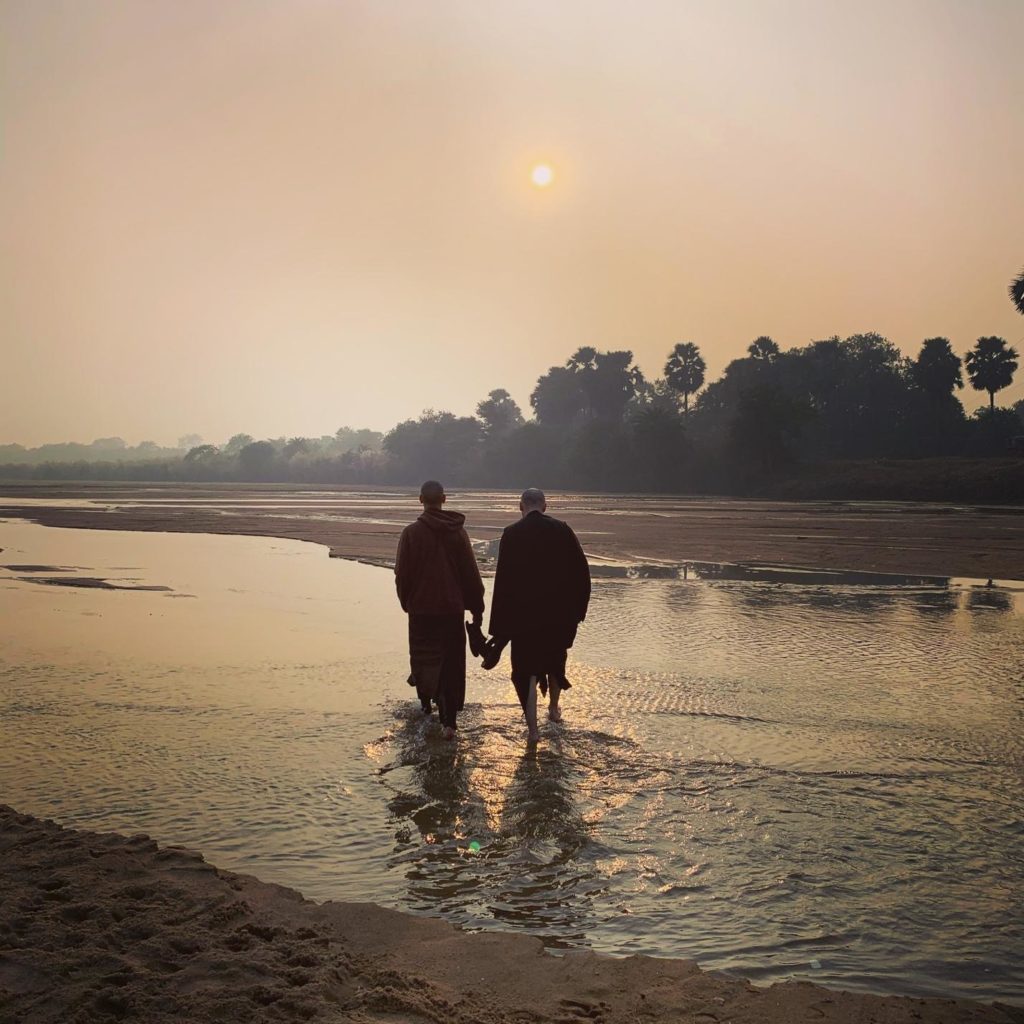


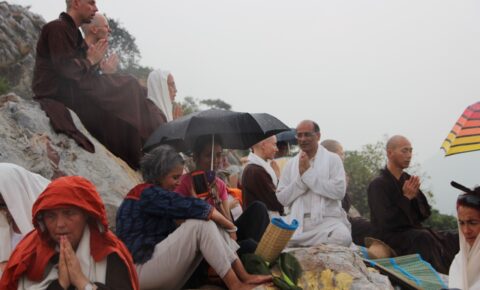
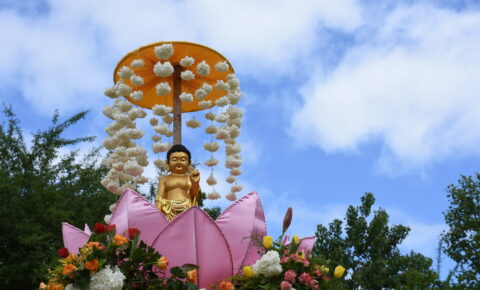
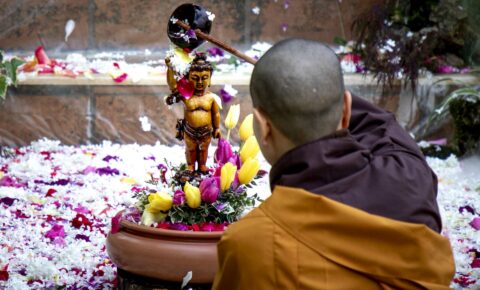
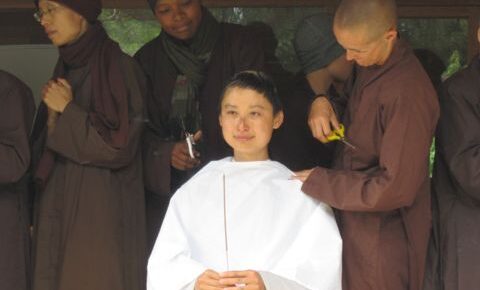
Share Your Reflections